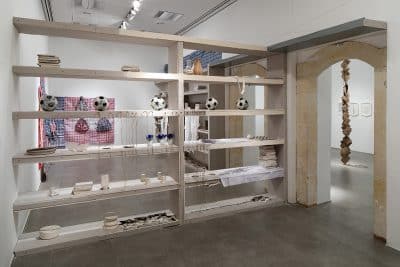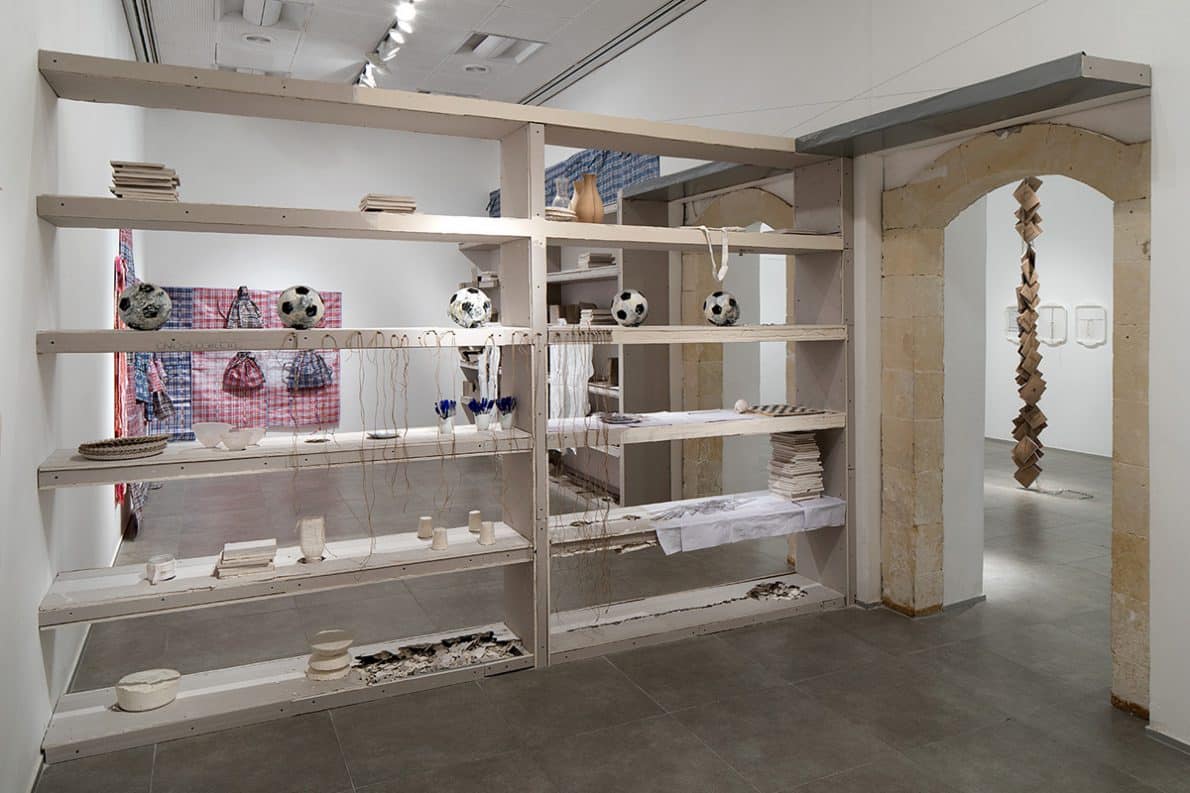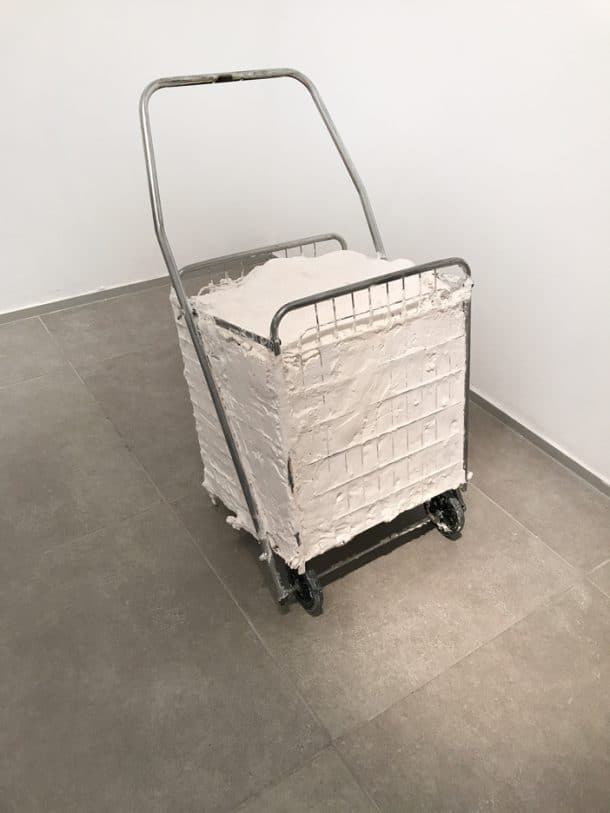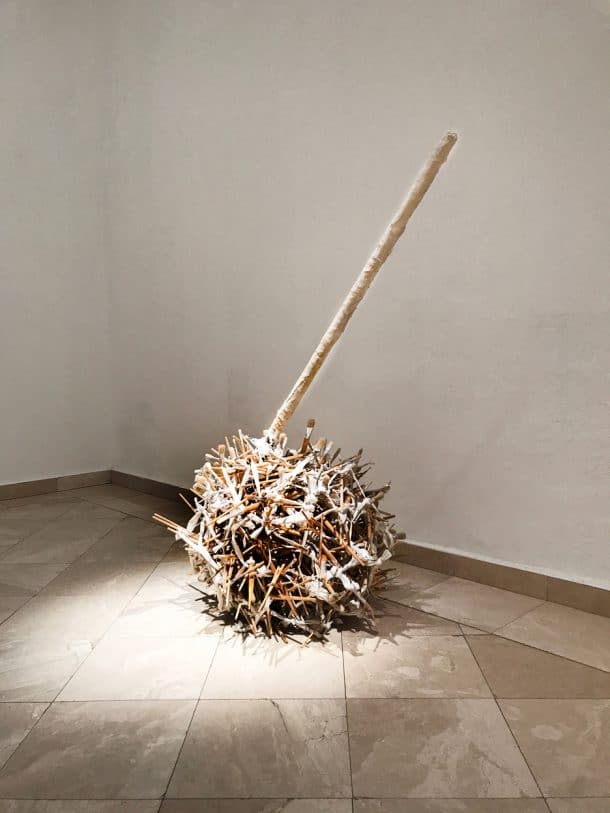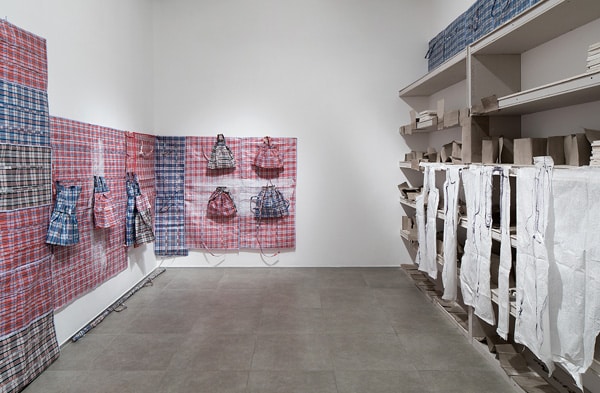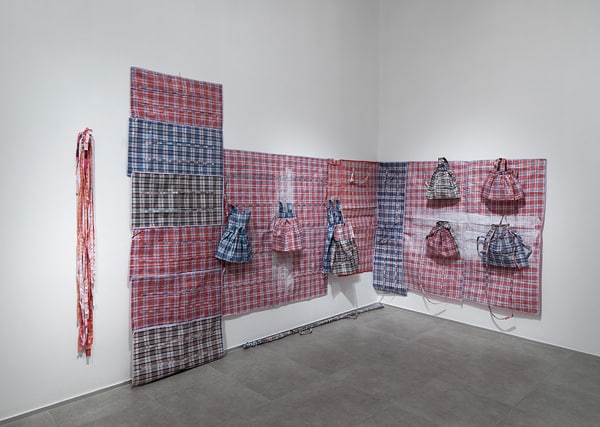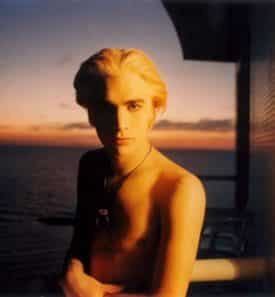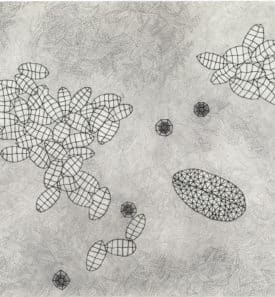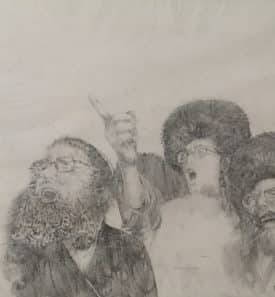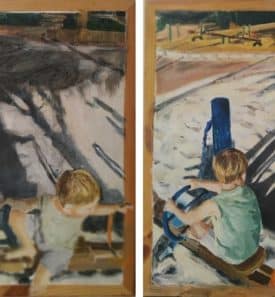The exhibition by Etti Abergel extends over all the museum’s spaces, as a continuing installation which is structured in chapters.
Within those chapters, as in a musical composition, are recurring motifs, dialogues between forms and materials, and varying intensities. Visiting the exhibition generates a sense of involvement in the exhibition: this is not art engaging with a specific content, but rather the thing itself – a sequence of objects in a certain order, positioned, suspended, connected, deconstructed. And yet the components themselves are identifiable as simple mundane objects, found while roaming through markets, carriers of stories and memories – not only the artist’s but the viewers’ as well.
Over the past two decades, Etti Abergel (b. Tivon – 1960, lives and works in Jerusalem) has invented an artistic language discernible in her chosen work methods and materials . Generally they are domestic items with sculptural potential – containers, funnels, colanders, trays, measuring tools – or objects from the realm of learning and art – pens, artists’ brushes, exercise-books. By changing their form, Abergel transforms them into sculptural structures within the space, in an assiduous process of deconstructing, joining, tying, wrapping, gluing, hybridizing, cutting, sewing, knitting, casting, suspending, positioning, and propping – techniques that push the language of art in unanticipated directions.
On the ground floor, the first space is the most abstract and subtle of the exhibition’s chapters. Two drawings on canvas, created in the museum by means of graphite and a bowl, frame the fragile geometric structures made of artists’ brushes. The painterly potential in the brushes clashes with the three-dimensional structure which they form, while a plastic bowl assumes the art tool role. Noticeable in this chapter are several elements characterizing Abergel’s oeuvre. Drawings are always part of her creative process, and in recent years have become integral to her installations. Abergel’s language of objects uses cheap and simple industrial objects, whose original designation is preserved yet simultaneously disrupted. A central trajectory in her work is the search for order, in conjunction with the constant disruption of order.
As an artwork specifically designed for the Negev Museum of Art, Etti Abergel’s work exploits every possible space; displayed in the entrance lobby are plastic baskets lined with plaster and arranged to match the direction of walking, with a waterfall of funnels and brushes leading to the upper floor.
On the upper floor each chapter is adapted to the specific space. The elongated first gallery is divided into two. Contrasting with the restrained appearance of the entrance, visitors see through library shelves a room crammed with items and symbols. Here Abergel presents the contrast between the library, as an organizing principle, where she collects, selects and displays items that store knowledge and memories – and the large tartan plastic carrier-bags associated with migrants and refugees. On the library shelves are abstract grey structures, perhaps hinting at crumbling architecture, and facing them on the colorful plastic sheets is a childlike-human representation – little print dresses, a school uniform.
The central room on this floor is an open space where visitors can wander freely between the anchors in the middle of the room and the walls. Motifs familiar from Abergel’s previous works reappear – the plastic baskets with twine spilling out of them, the knitted baskets, the exercise books, and pens. In every item, even the most humble ones like measuring tapes or paper cupcake holders, the artist finds the raw material’s potential for transformation into art. She uses techniques usually associated with “soft” home handcraft and with the transitory output of “women’s work”, contrasting with the “high” art of eternal sculpture.
The museum’s architecture provided a stimulus for the artist’s work in the space: using a metal cable she physically and metaphorically connects the central hall to a side-room that she transforms into a sort of bedroom for geometric forms.
Beyond the doorway, the installation continues towards its final chapters. A drawing on canvas and a column of plastic bowls echo the previous chapters, and lead to the last room. Though this signals the end of the exhibition, the voyage and the recurring memories it carries continue without closure.
Etti Abergel’s work lays bare a reality of contradictions, of parallel or contrasting movements, scraps of ideas and stories that do not coalesce into a whole or a logical, unifying sequence, resembling the surreal allegory for an imagined encounter (“Beautiful … as the fortuitous encounter of a sewing machine and an umbrella on a dissecting table,” in the words of the French poet Comte de Lautréamont (the pseudonym of Isidore-Lucien Ducasse). Her work is attentive to a complex emotional world, vulnerable yet powerful, alternately encompassing and permeable, woven and unraveled.
Curator: Dr. Dalia Manor
Assistant Curator: Nirit Dahan
Be'er Sheva municipality
Kivunim
Ministry of Culture and Sport
